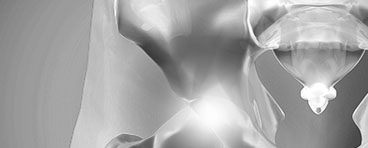Click on the links below to find out more
Meniscal Tears
OVERVIEW
There are two menisci in each knee – medial (inside) and lateral (outside). They are a very special type of cartilage, and act like shock absorbers within the knee to reduce pressure and stress across the joint.
The medial meniscus is on the inside of the knee, it is attached to the ligaments on the inside of the knee (MCL) and the joint capsule. As it is more firmly attached to the deep structures of the knee, it is more commonly injured than the lateral meniscus. It takes approximately 50% of the weight across the medial (inside) compartment of the knee. The lateral meniscus is on the outside of the knee, it is more mobile and ‘C’ shaped than the medial meniscus. It takes up to 80% of the weight across the outside compartment of the knee.
In cross section the meniscus looks like a triangle – with the apex (tip) on the inside and the base on the outside. The two parts of the meniscus like a ‘bow tie’ on an MRI scan.
Tears of the meniscus
The meniscus can tear (rupture) under a number of different circumstances. Traumatic actions such as excessive twisting of the knee while bent can result in a tear, but degenerative processes can also result in tears from simple actions such as walking or squatting. The former is more common in athletes playing sports such as football, while degenerative tears are most common in people over the age of 40.
Only the outer 1/3 of the meniscus gets a significant blood supply, but the inner 2/3 gets the majority of its oxygen and nutrients from the joint fluid and has minimal blood supply. As a consequence, tears of the inner part of the meniscus often do not heal (these are called white on white tears), whereas tears of the outer meniscus can heal (red on red tears). Treatment can vary from conservative methods such as physiotherapy and bracing to surgery.
There can be variations of the natural anatomy which can cause the meniscus to tear – “Discoid” Meniscus. This is where the meniscus develops into a complete semicircular shape. It lacks the stability of a normal meniscus, and consequently can tear more easily.
If you’re experiencing knee pain along the joint line and swelling, you may be suffering from a meniscal tear. Book a consultation with Dr David Slattery by calling his rooms at the Glenferrie Private Hospital on 03 9819 6934 or submit a request via our online enquiry form.

Dr David Slattery
FRACS MBBS (Hons) LLB FAOrthA
Dr David Slattery is an orthopaedic surgeon based in Melbourne with over 10 years of experience, with a special focus on hip and knee joint preservation and replacement. With qualifications in both medicine and law, he brings a unique and comprehensive approach to patient care. His surgical techniques are minimally invasive and evidence-based, designed to reduce pain and enhance recovery.
Trained in leading institutions across Europe and the USA, Dr Slattery offers advanced treatments for a wide range of joint conditions. He is deeply committed to patient outcomes and takes pride in tailoring treatment plans to each individual. Whether you’re an athlete or seeking relief from chronic joint pain, his goal is to restore function and improve your quality of life.










